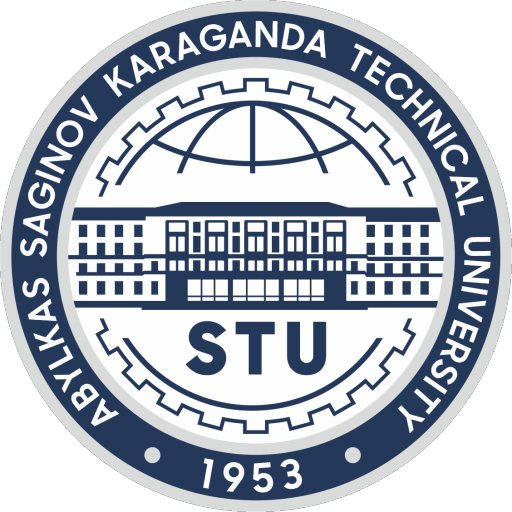AP09260338 “Developing the potential of innovative training engineers through STEAM education”. Project manager D.D. Jantassova.
Relevance
Today the topic of the scientific and technical sphere and art integration is one of the most relevant for the professional and technical society, and the creative industries based on creativity and intellectual capital add new accents to the discussion. Foreign education specialists have recently resorted to the practice of STEAM education. It is based on interdisciplinarity and integration of five (Science, Technology, Engineering, Art and Mathematics) scientific areas into a unified training system to solve specific tasks taken from real life. An obvious emphasis on the creative aspect of the innovative economy is manifested, in particular, in the fact that creative, artistic disciplines united by the general term Arts, are actively included in STEAM education. The need for the unity of scientific, technical and art aspects in education is considered in the project as an opportunity to improve the quality of training technical specialists by developing the potential for innovation and creativity of training programs.
The project will study the process of training technical students through STEAM teaching technologies, educational and methodological documents and learning outcomes that affect academic performance and the quality of education, taking into account the formation of a specialist who possesses innovative thinking, communicative cooperation skills, and is also able to make creative decisions in professional activity.
The project purpose
Developing and implementing a model of training technical specialists using STEAM technologies for the implementation of sustainable training programs of intercultural communication, creative industry and creative cooperation based on creativity and intellectual capital. Assessing the needs of the STEAM education potential, developing and implementing measures to develop the potential of training programs in technical specialties based on the development of specialized competences, which allow strengthening qualifications and abilities of students and teachers at the international level.
Expected and achieved results
- An analytical study of the experience of implementing STEAM approaches in accordance with international practice has been carried out.
- There have been revealed methods of integrating STEAM approaches into the main processes of the university on the basis of didactic provisions formulated on the basis of SWOT analysis.
- The assessment of training curricula, learning outcomes for compliance with the didactic principles of STEAM education has been carried out.
- STEAM components of implementing in curricula and academic requirements for students in the field of STEAM education have been determined. Based on the assessment, the points of developing educational programs within the framework of STEAM, as well as the key points of the introduction of the art component into the educational process of the university have been identified.
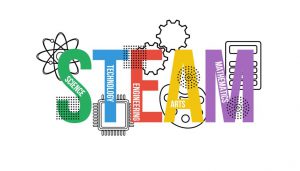 |
List of publications
There have been published 3 articles in the journals recommended by the CCES. 1. Jantassova D.D., Akhmetova D.R. Study of foreign theory and practice of STEAM approach application in higher education// Journal of KazNPU named after Abai, Series of Pedagogy and Psychology 2021. Issue 48. No. 3. https://journal-pedpsy.kaznpu.kz/index.php/ped/issue/view/59. |
- Jantassova D.D., Akhmetova D.R. On the development of the potential for innovative training of engineers through STEAM education// Journal “Questions of Pedagogy”. 2021. No. 7 (July) ISSN 2518-1793. https://www.elibrary.ru/contents.asp?id=46439279
- Jantassova D.D., Akhmetova D.R. Innovative training of engineers through the integration of the art component at STEAM University// Vestnik KarU n.a. E.A. Buketov, Series Pedagogy. 2021. No. 4.
Research team
- Jantassova Damira Dulatovna, project manager, Candidate of Pedagogical Science, Head of the FL department.
ORCID ID: 0000-0003-2595-3249
Researcher ID P-7271-2017
Scopus Author ID 57189027014
- Akhmetova Dinara Rashidovna, M.Sc., an. lecturer of the FL department, doctoral student of KU named after Buketov.
ORCHID 0000-0003-2149-3353
- Yurchenko Vassili Viktorovich, PhD, Acting associate professor, Head of the TEME&S department.
ORCHID 0000-0002-6543-1632
Scopus Author ID 57213756780
- Kalinin Alexey Anatolyevich, PhD, Head of the ICS department.
ORCHID 0000-0003-4699-7240
Scopus Author ID 57193550259
- Shebalina Olga A., M.Sc., doctoral student of ENU named after Gumilyov.
ORCID 0000-0001-7641-2528
Scopus Author ID: 57207845776
- Damiyev Daniel Temirgalievich, M.Sc. laboratory assistant of the FL department.
ORCID iD 0000-0002-4245-6810
Information for potential consumers
A model of developing the potential for training technical specialists through STEAM education will help to implement sustainable training programs based on creativity and intellectual capital.
АР09261117 “Development of web textbooks “Qazaq tili” for levels B1, B2 in Latin script through innovative technologies (for training at higher education institutions)”. Project manager N.T. Nygmetova
Relevance
In the state program of implementing the country’s language policy for 2020-2025, ensuring the functioning of the Kazakh language as the state language, modernizing the Kazakh language based on the Latin alphabet is one of the main goals.
The project purpose
Supporting the transition to the Latin alphabet.
The article of the Head of State “Bolashakka bagdar: rukhani zhangyru” outlined the forthcoming tasks in the sphere of spirituality including the main one: to begin a gradual transition of the Kazakh language into the Latin alphabet.
Demonstrating the effectiveness of using innovative technologies in teaching the Kazakh language.
Expected and achieved results
- The site https://q-uirenu.kz has been organized for levels B1, B2 in the subject “Kazakh language”.
- There have been collected educational materials using e-learning technology.
- The web-based textbook “Qazaq tili” has been developed and put into effect.
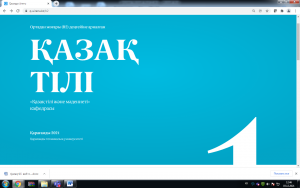 |
Research team 1. Nygmetova Nurgul Tursynovna, PhD., Acting Associate Professor of the KL&C department of. ORCID 0000-0002-6421-8231 Scopus Author ID 56127513100 2. Zhetpisbay Sholpan Akhangyzy, M.Sc., senior lecturer of the KL&C department. Scopus Author ID 56178067800 3. Amangeldina Mereke Sarsenbekovna, PhD., lecturer at the KL&C department. 4. Tursyn Abylai Oraluly, M.Sc., programmer. 5. Derkach Sergey, designer. Information for potential consumers Web textbooks “Qazaq tili” for levels B1, B2 can be used at higher education institutions, vocational education institutions. |
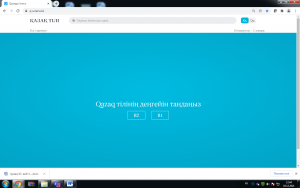 |
|
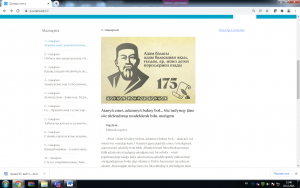 |
AP09259869 “Developing methods of assessing occupational safety based on multivariate analysis and modeling at chemically hazardous facilities in Kazakhstan”. Project manager P.V. Yemelin P.V.
Relevance
Enterprises of the Republic of Kazakhstan that have chemically hazardous facilities (CHF) are characterized by a variety and specificity of technological processes, peculiarities of working conditions, its organization and sanitary and hygienic conditions.
The research team plans to develop a methodological approach to the analysis and assessment of the risk of accidents, industrial injuries and occupational diseases of personnel at CHF of enterprises of the Republic of Kazakhstan with its further integration into the standard process of a systematic comprehensive assessment of occupational safety.
The project purpose
The purpose of the project is to develop scientifically based methods of assessing occupational safety and to reduce the risk of accidents at industrial facilities, industrial injuries and occupational diseases of workers of chemically hazardous facilities of enterprises of the Republic of Kazakhstan.
Expected results
Developing and implementing the “Information and analytical system of monitoring and assessing the risk of accidents, occupational diseases and industrial injuries at enterprises with CHF of the Republic of Kazakhstan” will provide the following:
– controlling and supervising organizations will determine promptly a set of measures aimed at reducing the impact of damaging emergency factors, receive reliable information about the current and expected state of CHF, to promote more effective regulation and state control;
– local executive authorities will have reliable information of the current and expected state of occupational safety at potentially hazardous facilities in order to make timely decisions on measures to improve it;
– enterprise management will improve the efficiency of occupational risk management, to carry out a comprehensive analysis and assessment of the risk of accidents, industrial injuries and occupational diseases of personnel, to calculate and predict the quantitative characteristics of the safety state that can be monitored at specific technological facilities or processes, which in turn will reduce economic costs associated with the elimination of damage to the working environment and labor process.
The developed software product can be a subsystem of the unified Corporate information and communication system “Computer system of monitoring hazard classes of industrial enterprises of the Republic of Kazakhstan”.
Achieved results
A methodological approach has been developed to the development of multifactor models and risk assessment and management systems using a multi-criteria decision-making methodology based on the method of expert assessments and statistical analysis, which allows an industrial enterprise developing a set of measures aimed at preventing chemical accidents and reducing the consequences if they occur.

Visiting FSBE CD and ES RI of Russia, Moscow |
Research team
1. Yemelin Pavel Vladimirovich, project manager, Doctor of Engineering, Deputy Director of the Science and Innovation Department of the NAKS GATs LLP. ORCID ID 0000-0001-7431-0069. Author ID in Scopus 57194898487. Researcher ID Web of Science AAZ-5032-2020. 2. Kudryavtsev Sergey Sergeyevich, responsible officer, PhD, Associate professor of the C&CT department. ORCID ID 0000-0002-7232-6304. Author ID in Scopus 57194898408. Researcher ID Web of Science AAA-6935-2020. 3. Amirov Azamat Zhanbulatovich, PhD, director of the DUDD. ORCID ID 0000-0002-5895-7185. 4. Derbush Svetlana Nikolayevna, Ccandidate of Biological Science, Associate professor of the C&CT department. ORCID ID 0000-0003-4520-1546. |
- Rakhimberlina Aigerim Amantayevna, M.Sc., teacher of the MA&OS department.
ORCID ID 0000-0002-5310-5944
- Yemelina Natalya Konstantinovna, Candidate of Economic Science, Associate
Professor of the HM department of Kazpotrebsoyuz KU.
ORCID ID 0000-0002-0215-7525.
Author ID in Scopus 5719487103657194871036.
Researcher ID Web of Science AAT-1281-2020
- Kozhanov Murat Galiaskarovich, M.Sc., doctoral student of gr. ISD-18 at ENU n.a.
Gumilyov
List of publications
- Kudryavtsev S.S., Kozlov V.N., Tseshkovskaya E.A., Matonin V.V., Rakhimberlina A.A., Yemelin P.V. Towards the issue of introducing a unified approach to the classification of chemically hazardous objects in the Republic of Kazakhstan. Monitoring. Science and technology, Makhachkala: CMOSiPR LLP, 2018, No. 3 (36). P. 34 – 42.
- Yemelin P.V., Yemelina N.K., Kudryavtsev S.S., Rakhimberlina A.A. Developing and building a structure of the database “Information and analytical system for assessing the environmental consequences of anthropogenic emergencies at chemically hazardous facilities (Karaganda region). University Proceedings, Karaganda: KSTU, 2019, No. 2 (75). P. 50 – 54.
- Kudryavtsev S.S., Yemelin P.V., Britko V.V., Rakhimberlina A.A. Modern scientific approaches to determining the factors affecting the formation of a zone of chemical contamination in accidents at chemically hazardous facilities. University Proceedings, Karaganda: KSTU, 2019, No. 2 (75). P. 41 – 46.
Information for potential consumers
The results of the project implementation will allow the industrial enterprise developing a set of measures aimed at preventing chemical accidents and reducing the consequences if they occur.
Area of use: occupational and industrial safety.
